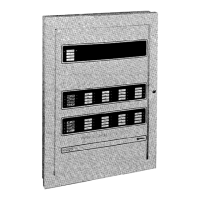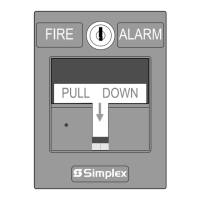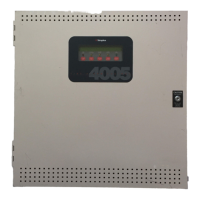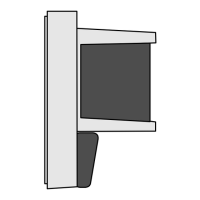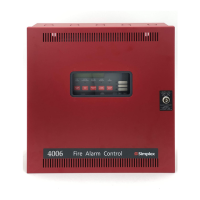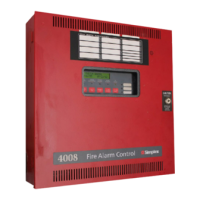3-8
When an abnormal condition occurs, at least one of the panel LEDs begins to
flash and the tone-alert sounds. The panel display shows the total number of
abnormal conditions present in the system. At a glance, you know how serious
the situation is by reading the number of abnormal conditions displayed (see
Figure 3-3).
Figure 3-3. Abnormal Condition Display
Press the appropriate <
ACK> key (under the corresponding flashing LED) to
view the abnormal condition and silence the tone-alert. The 4005 also creates a
“list” when abnormal conditions exist. The list contains the number of abnormal
conditions present in the system.
When a Fire Alarm Condition is detected by the system, the FIRE ALARM LED
flashes and the tone-alert sounds. For Supervisory and Trouble Conditions, the
appropriate panel LED flashes, and the tone-alert sounds and remains ON
without pulsing.
The 4005 is a Global Acknowledged System which means ONE (1) press of an
<ACK> key globally acknowledges every abnormal point in the system in that
category. If all the points are acknowledged in this manner, an appropriate
message is displayed.
When a point is acknowledged, the appropriate LED remains ON and the tone-
alert is silenced. The total number of alarm, trouble, and supervisory conditions
is shown in an alternating sequence on the display along with a prompt to the
press <
ACK> for point review. Pressing <ACK> scrolls through the selected list
in chronological order. Each list is different and contains information
concerning a particular abnormal condition. In some cases, additional
information is available on the condition by pressing
<ö> or <ì>.
Note: Refer to the Single-Sheet Operating Instructions in
Appendix C for additional information.
Continued on next page
Handling Abnormal Conditions
Abnormal Conditions
Acknowledging an Alarm,
Trouble, or Supervisory
Condition
),5(
683(59,625<
7528%/(
7528%/( 3UHVV$&.WRUHYLHZ
Three Troubles
indicated
)LUVW)ORRU(DVW:LQ
5RRP
6PRNH'HWHFWRU 7URXEOH
Technical Manuals Online! - http://www.tech-man.com

